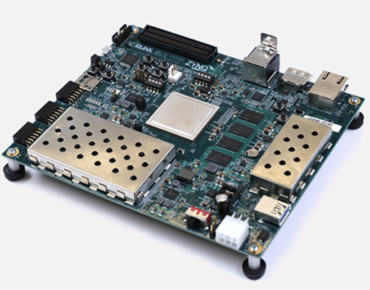Xilinx Rolls AI Model, Kit for X-Ray Classification

Deep learning frameworks are being widely used as a diagnostic tool to help clinicians scan medical imagery with greater accuracy. Those models are being deployed on dedicated processors and accelerators capable of running neural networks used to classify and detect diseases.
Xilinx Inc. joins the growing list of chip makers developing reference designs for platforms that can be used by medical equipment makers to develop models for clinical applications. The FPGA specialist (NASDAQ: XLNX) said this week it worked with Spine.AI to develop a deep learning model and reference design kit for X-ray classification.
Images can then be uploaded to the cloud via Amazon Web Services (NASDAQ: AMZN).
The model is deployed on the chip maker’s Zynq UltraScale SoC device based on the Xilinx deep learning processor and a TensorFlow-oriented accelerator. The combination is said to provide sufficient processing power to run classification and detection neural networks.
The Xilinx device runs on Python, allowing users to adapt models to different applications requirements. In this case, the open source model can be used to deploy trained models for radiological applications running in an edge device that can then be scaled in the cloud.
Xilinx said the AI model was trained using AWS SageMaker and deployed via the public cloud giant’s Greengrass Internet of Things service. The configuration allows remote machine learning model updates and “geographically distributed” inference. The IoT service allows physicians to upload X-ray images to the cloud without using a physical device.
The model was previously used to detect pneumonia in COVID-19 patients. The deep learning model was trained using more than 30,000 labeled pneumonia images.
The partners said the Xilinx AI starter kit is designed to help clinical researchers develop a radiology workflow aimed at diagnostic applications. The Arm-based kit includes deep learning models for pneumonia and COVID-19 based on the image processing of chest X-rays.
Xilinx, reportedly being targeted for acquisition by AMD, touts the AI reference design kit and the X-ray detection model as delivering low output latency running on its Zynq UltraScale SoC as an edge device on its ZCU104 development board. Along with the Zynq architecture, the framework uses AWS Lambda software to connect local devices to the public cloud service, providing local computing and other capabilities to devices running IoT applications.
Also used was PYNQ, a Python programming language tuned to the Zynq architecture.
The silicon specialist’s deep learning processing unit helps accelerate the convolutional neural network within IoT Greengrass.
Related
George Leopold has written about science and technology for more than 30 years, focusing on electronics and aerospace technology. He previously served as executive editor of Electronic Engineering Times. Leopold is the author of "Calculated Risk: The Supersonic Life and Times of Gus Grissom" (Purdue University Press, 2016).










